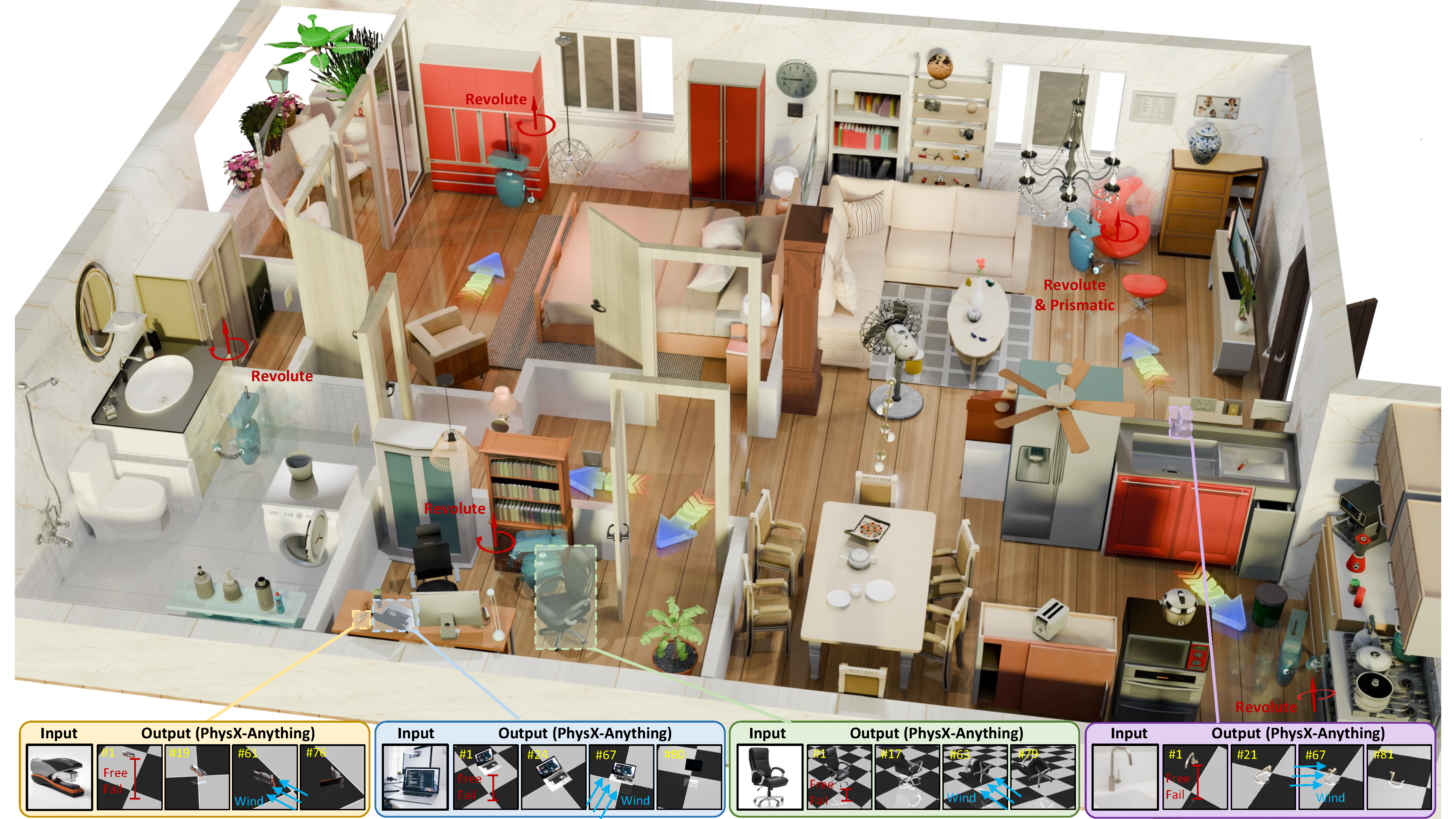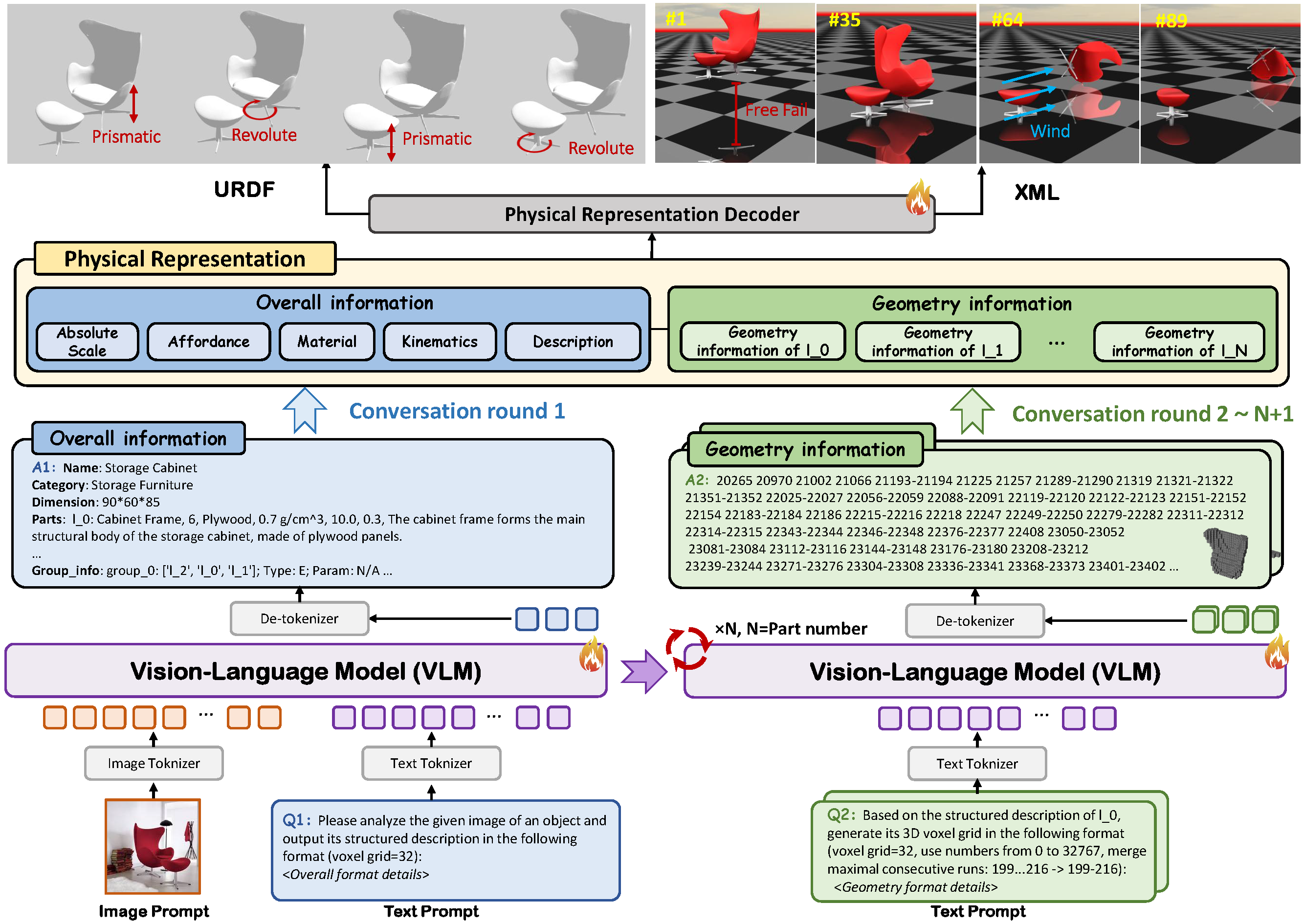Abstract
3D modeling is shifting from static visual representations toward physical, articulated assets that can be directly used in simulation and interaction. However, most existing 3D generation methods overlook key physical and articulation properties, thereby limiting their utility in embodied AI. To bridge this gap, we introduce PhysX-Anything, the first simulation-ready physical 3D generative framework that, given a single in-the-wild image, produces high-quality sim-ready 3D assets with explicit geometry, articulation, and physical attributes. Specifically, we propose the first VLM-based physical 3D generative model, along with a new 3D representation that efficiently tokenizes geometry. It reduces the number of tokens by 193×, enabling explicit geometry learning within standard VLM token budgets without introducing any special tokens during fine-tuning and significantly improving generative quality. In addition, to overcome the limited diversity of existing physical 3D datasets, we construct a new dataset, PhysX-Mobility, which expands the object categories in prior physical 3D datasets by over 2× and includes more than 2K common real-world objects with rich physical annotations. Extensive experiments on PhysX-Mobility and in-the-wild images demonstrate that PhysX-Anything delivers strong generative performance and robust generalization. Furthermore, simulation-based experiments in a MuJoCo-style environment validate that our sim-ready assets can be directly used for contact-rich robotic policy learning. We believe PhysX-Anything can substantially empower a broad range of downstream applications, especially in embodied AI and physics-based simulation.

I. Architecture of PhysX-Anything

PhysX-Anything conducts a multi-round conversation to produce a physical representation that includes overall information (left) and detailed geometric information for each part (right). Decoding this representation yields high-quality, simulation-ready 3D assets with explicit physical attributes that can be directly used in downstream applications.
II. Architecture of Decoder

Given the coarse geometry, a controllable flow transformer is employed to generate fine-grained geometric information. The format decoder then combines the overall physical information and the refined geometry to produce assets in six different formats.